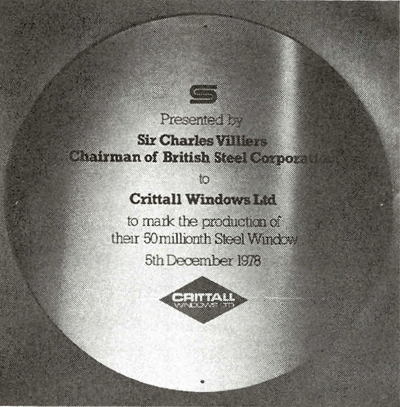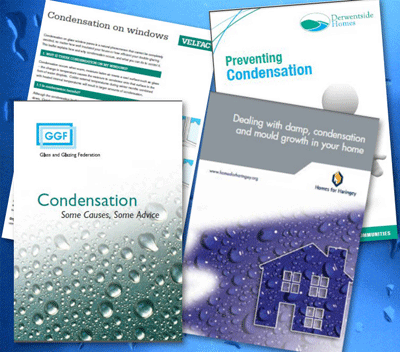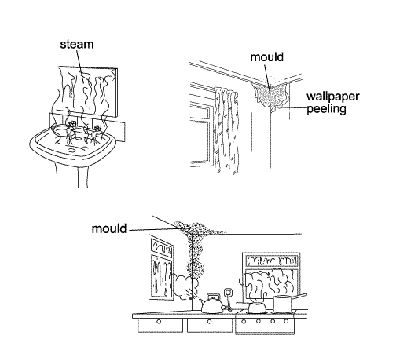How to prevent condensation on your windows
There are many rumours about steel windows and condensation - out expert gives the lowdown on the causes of condensation and how to prevent it on your windows

Recently, while sharing a few beers with an architect friend, I experienced a sense of déjà vu. I knew what was coming next, because it has happened so many times before.
He edged closer to me, leaned forward, looked around, as if to check no one was eavesdropping, and then, in conspiratorial tones, whispered, ‘I think steel windows are great... but there's always that problem... you know..." dramatic pause... "con-den-sation,' he mouthed silently.
I felt like I had been caught up in a Les Dawson sketch with Cissie and Ada.
I told him he was obviously as well-informed as Cissie and Ada. If I had a pound for every conversation I have had which associates steel windows and condensation, I might not have made it to lottery-winner status, but I would definitely have been able to afford to fill my car's huge fuel tank. As a result, I have become reasonably well-informed about condensation.
If something is repeated enough times, it becomes accepted as fact.

Between 1920 and the mid 1980s, every social housing project in the UK incorporated standard metal windows in at least part of the design. In 1978 Crittall Windows were presented with a plaque by British Steel to commemorate production of their 50millionth window. During the same period, there were over 50 other steel window manufacturers supplying to the UK market.
Those windows were a significant improvement on their predecessors, but in comparison to the windows available today, were very poor performers in terms of thermal performance, and weatherproofing. So, when the double-glazing salesmen knocked on your door, one of their sales lines was to blame the condensation that was visible on windows, on the single-glazed steel windows. To be fair, they were partly correct, but over time, the statement has been corrupted to 'steel windows cause condensation.'
Exquisite houses, the beauty of Nature, and how to get the most from your life, straight to your inbox.
While researching the latest thoughts on condensation for this article, I discovered that nearly every window manufacturer, and Housing Association has now issued a pamphlet about condensation, and what can be done about it.
Interestingly, not one of them says get rid of your steel windows. The reason? Steel windows do not cause condensation.

Today, I want to explain what causes condensation, and what the options are to minimise it. Condensation occurs where humid air comes into contact with air, or a surface, which is at a lower temperature.
Air contains water vapour. The warmer the air, the greater is its capacity for carrying water vapour. When warm, moist air comes into contact with a cooler surface, or cooler air, it drops in temperature, and loses some of its capacity for storing moisture, so some of it is released to form condensation in the air, as steam, or on the surface, as water droplets.
Although it is most immediately visible on surfaces that cannot absorb liquid, e.g. windows, ceramic tiles, mirrors etc, it can form on any surface, and it may not be noticeable until mould appears, or the material starts to rot.
Where does the moisture come from? I hear you ask.
Day-to-day human activities generate warm, moist air. An average family can generate as much as 10 litres of moisture without really trying:
* Breathing, * Cooking, * Personal Hygiene, * Laundry

In winter, the moisture content can be increased because of heating, which can also generate moisture, as well as increase the capacity of the air to carry water vapour.
Moisture can also be drawn from the fabric of the building itself, where faults have developed because of, for example, a failed or missing damp proof course, damaged drainage systems, debris in wall cavities, blocked or missing air bricks, damaged roof etc.
The most effective ways to reduce condensation are: 1. Check and repair the structure of the building, 2. Reduce the moisture content of the air, by: * After a bath or shower, open a window to the outside, and close the bathroom door. * Where possible, dry washing outside, where not possible, ensure a window is open to provide ventilation to the outside. * Add powered ventilation/extraction to areas which generate high levels of moisture e.g. kitchen, bathroom etc. 3. Provide good ventilation, to increase the circulation of air. 4. Replacing old single-glazed windows with modern double, or triple-glazed units will reduce the appearance of condensation on the glass. However, unless you reduce the humidity within the house, the moisture in the air is likely to condense somewhere else, quite often behind furniture, or in cupboards. 5. Invest in a dehumidifier - in general these are large, noisy, expensive to run and, in my opinion, not practical for most residential applications. 6. Invest in a whole-house ventilation system which continuously circulates fresh, filtered air into key areas in the home to dilute the existing humid air.
It is highly unlikely that a house in the UK will ever become condensation-free, but by ensuring the building is maintained in good condition, well ventilated, and by adopting relatively minor changes to lifestyle then it can be reduced.
John Keleher is the IT Manager of Crittall Windows, who produce the same slim, elegant frames as the original steel windows, with the option of thermally efficient double glazed units, as well as single glass.
His previous position was Manufacturing Systems Manager for the Engineering Division of VSEL (now part of BAE Systems), the company that built the Trident nuclear submarine fleet and Trafalgar Class hunter-killer submarines among other armaments.
In addition to the windows industry, he takes an active interest in conservation, heritage, construction, architecture, design and technology.

You can follow John on Twitter at @johnkatcrittall
This is an article from ProjectBook which provides a wide range of information for the conservation, restoration, care and repair of period and listed buildings. Crittall Windows is featured in ProjectBook's specialist Products Directory. Updated daily with new content, the website features the Heritage Register which contains over 500 vetted craftsmen, contractors and consultants from all over the UK, a products directory, informative articles, current news, events and more. For more information, visit www.projectbook.co.uk
Country Life is unlike any other magazine: the only glossy weekly on the newsstand and the only magazine that has been guest-edited by His Majesty The King not once, but twice. It is a celebration of modern rural life and all its diverse joys and pleasures — that was first published in Queen Victoria's Diamond Jubilee year. Our eclectic mixture of witty and informative content — from the most up-to-date property news and commentary and a coveted glimpse inside some of the UK's best houses and gardens, to gardening, the arts and interior design, written by experts in their field — still cannot be found in print or online, anywhere else.
-
 A Georgian farmhouse that's an 'absolute gem' in an ancient village on Salisbury Plain
A Georgian farmhouse that's an 'absolute gem' in an ancient village on Salisbury PlainJulie Harding takes a look at the beautiful West Farm in a gorgeous Wiltshire village.
By Julie Harding Published
-
 Can you guess the landmark from its gingerbread copy cat? Take our quiz
Can you guess the landmark from its gingerbread copy cat? Take our quizToday's quiz takes a detailed look at the gingerbread works on display at London's The Gingerbread City — and asks if you can guess which iconic landmark they are.
By Country Life Published

